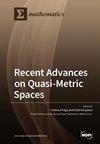Methods of Multi-Criteria Optimization of Technological Processes in a Fuzzy Environment Based on the Simplex Method and the Theory of Fuzzy Sets
IF 2.3
3区 数学
Q1 MATHEMATICS
引用次数: 0
Abstract
Many modern technological objects in practice are characterized by the uncertainty of the initial information necessary for their management. Recently, one of the pressing scientific and practical problems is the development of new optimization methods for controlling the operating modes of such objects in a fuzzy environment. In this regard, the objective of this study is to develop methods of multi-criteria optimization in a fuzzy environment by modifying the simplex method and various optimality principles based on fuzzy mathematics methods. The methodology of the proposed study is based on a hybrid approach, which consists of the integrated use and modification of simplex methods and optimization methods with various optimality principles for working in a fuzzy environment. The main results are as follows: a simplex method of multi-criteria optimization of immeasurable criteria (here, we are talking about the impossibility of physical measurements of criteria, the values of which are estimated by decision maker); a theorem on the convergence of the solution sequence obtained using the proposed method to the minimum value of the criteria; a heuristic method based on a modification for fuzziness and a combination of the maximin and Pareto optimality principles, which allows effectively solving multi-criteria optimization problems in a fuzzy environment. The heuristic method proposed will be used to solve a real production problem—optimization of the technological process of benzene production.基于单纯形法和模糊集理论的模糊环境下技术流程多标准优化方法
在实践中,许多现代技术对象的特点是其管理所需的初始信息具有不确定性。最近,亟待解决的科学和实际问题之一是开发新的优化方法,以便在模糊环境中控制这些对象的运行模式。为此,本研究的目标是通过修改单纯形法和基于模糊数学方法的各种优化原则,开发模糊环境下的多标准优化方法。拟议研究的方法以混合方法为基础,其中包括综合使用和修改单纯形法和优化方法,以及在模糊环境中工作的各种优化原则。主要成果如下:不可测量标准(这里指的是不可能对标准进行物理测量,其值由决策者估算)的多标准优化的单纯形方法;关于使用拟议方法获得的解序列收敛到标准最小值的定理;基于模糊性修改和最大化原则与帕累托最优原则相结合的启发式方法,该方法可以有效解决模糊环境中的多标准优化问题。所提出的启发式方法将用于解决一个实际生产问题--苯生产技术过程的优化。
本文章由计算机程序翻译,如有差异,请以英文原文为准。
求助全文
约1分钟内获得全文
求助全文
来源期刊

Mathematics
Mathematics-General Mathematics
CiteScore
4.00
自引率
16.70%
发文量
4032
审稿时长
21.9 days
期刊介绍:
Mathematics (ISSN 2227-7390) is an international, open access journal which provides an advanced forum for studies related to mathematical sciences. It devotes exclusively to the publication of high-quality reviews, regular research papers and short communications in all areas of pure and applied mathematics. Mathematics also publishes timely and thorough survey articles on current trends, new theoretical techniques, novel ideas and new mathematical tools in different branches of mathematics.
 求助内容:
求助内容: 应助结果提醒方式:
应助结果提醒方式:


